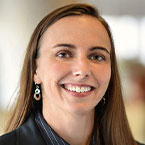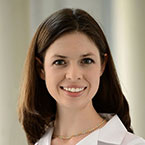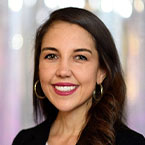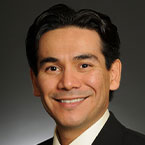Thanks to medical advances, children born with
spina bifida are now living well into adulthood. Still, navigating a complex world of healthcare, often involving multiple doctors focused on different medical issues, can be a challenge.
Transitioning from pediatric to adult care is not always easy for young people with spina bifida and their families.
How your pediatrician can help
Your child's doctor can help put together an interdisciplinary team. It may include a primary care doctor as well as neurosurgical, urological, orthopedic, neurodevelopmental specialists, for example. The team can work with you and your child to develop a Transition Policy and map out the
Transition Care Plan.
In addition to making the transition easier, the plan can help in monitoring and tracking your child's readiness, skills and abilities. These skills and abilities should continue to develop throughout young adulthood.
How can parents encourage their teen to gain more responsibility & independence?
Children with spina bifida may start getting care for multiple medical issues related to the condition beginning early in their lives. Likewise, an ongoing discussion of the issues related to transitioning out of the pediatric system should
start early.
Adolescence is a prime time for fostering growth in responsibility and independence. A
mindful partnership between your family and your medical providers can help your child set goals to increase their self-management skills and independence.
During medical visits, encourage your teen to practice communicating with their health care team. This should include talking with providers about their medical history, telling them which medications they take and supplies they need, and their ongoing care plans.
Are there challenges specific to spina bifida that can affect the transition process?
Yes, some young people with spina bifida may struggle with social skills, motivation, and overall development of adaptive skills and independent functioning. So, a teen's developmental level and mental health can greatly influence their journey toward independence.
Teens with spina bifida often show strengths in verbal skills, vocabulary and word reading. In addition, they may be skilled at memorizing facts and steps to take. At the same time, some individuals may have issues with
executive functioning. These skills involve working memory, flexible thinking, and self-regulation.
Because of this, they may need more coaching in goal-setting, planning, organization and controlling impulsive behaviors. Math, problem solving, abstract reasoning, fine motor skills and visual-motor integration may also be more challenging for them. Although intellectual disability is relatively uncommon with spina bifida, it can occur.
While these issues can present extra challenges to self-care, they are not an absolute barrier and need to be addressed with your child's transition coaches.
 7 Tips to Help Navigate the Shift to Adult Care
7 Tips to Help Navigate the Shift to Adult Care
By: Lizzy
I've been with my pediatric team at the children's hospital my whole life. They know me and my complex medical history inside and out.
Now that I'm 18 and transitioning into the adult medical world, I will start with new doctors. They don't know me and may not be as well versed about spina bifida as my pediatric providers.
To help prepare myself for this big shift, I've gradually become more involved in managing my own care during high school. This can prevent feeling overwhelmed about doing it all at once. If you are making the transition to adult care, consider these steps that have helped me:
Start taking over the conversation at appointments. My mom has always been the one scheduling appointments and talking to my doctors. Since I started high school, I've been talking with my doctors more during appointments. I do most of the talking with my mom available for support.
Learn what you can and can't do independently for yourself. I've gradually taken over as much of my personal care as I can do independently. For example, I now manage my medication and supply, do skin checks to prevent sores, and set up my nightly medical routine by myself. If there is a task that is difficult to do independently, we ask my physical therapy or occupational therapy teams for help and ideas.
Use your tools. I use calendar notifications on my phone to remind me of anything I need to do. This helps ensure I don't miss anything important.
Make sure you understand where your medical records are and what they say. I have learned to use my online patient portal to send messages to providers, find medical records, look up appointments and more. I keep a list of emergency contacts on my phone as well as copies of my emergency action plan.
Start talking with your pediatric team about transition early. The past few years, my clinic doctors have started to describe what my adult care will look like. They've also discussed what I will need to look for in a primary care provider.
Learn to self-advocate. My parents have always been my biggest advocates. I have been learning to speak up for myself, since I am not naturally an assertive person. If something doesn't feel right or you don't understand something, say so. This is your health, and you have the right to be involved in your care. Sometimes I have to remind myself of that to build up courage!
Use your support system. Talking with my family throughout this experience has calmed my anxiety a lot. I am working to take charge of my care, but I won't need to do it on my own. With preparation, a good mindset, and support, I can navigate the health care transition successfully—and so can you!
How can parents better understand and support their child's strengths and weaknesses?
One of the first steps in helping young people with spina bifida on their journey toward more independence is to identify their unique neurodevelopmental strengths and weaknesses.
Often, scores on specific psychological or educational tests can provide a closer look at some of these. However, these sometimes these evaluations simply show what parents "have known for years."
Still, in order to best understand these strengths and weaknesses, a neurodevelopmental assessment is often helpful. Providers who perform these assessments include:
It is important to remember that public school systems are required to complete evaluations upon a family's request. If the child qualifies for services, the school should help the family develop an
Individualized Education Program. This process can also help inform medical providers of the student's unique strengths and weaknesses, and help reveal which services young people need as they begin to transition out of the pediatric medical system.
Since adolescents with spina bifida may be delayed in acquiring certain skills, they may need extra practice with step-by-step instructions to make the most progress toward self-management. Because of executive function challenges, for example, some teens may need more support taking on the responsibility for self-care routines such as remembering to catheterize on time. Coaching from a family member, a schedule, prompts with phone or watch alarms and rewards can help them succeed.
When should teens start to fully take part in the transition process?
A teen and their family should begin
making plans for the transition to adult care between the ages of 12-14 years of age. The transition planning process should include:
Clearly determining the age for the transfer from pediatric to adult care.
Developing a medical summary, which can include a medical history, a list of medications/supplies, the care team members, etc.
Planning for the home, insurance, and community-based services to change after 18 years of age.
Thoroughly discussing the decision-making support options needed when the individual turns 18 years old. The levels of possible support are independent, supported, or guardianship.
At each routine follow-up, your child, family and medical team should work together to update the Transition Care Plan and set goals to continue the journey toward self-management.
Remember
Preparing your child with spina bifida for the transition to adult-centered health care will help them in many ways beyond good health. It can help them develop the self-management skills that can help them reach long-term goals and opportunities, such as higher education and employment, independent living and interpersonal relationships in adulthood.
More information
About the authors
 Heidi Castillo, MD, FAAP, is an Associate Professor of Pediatrics at the Meyer Center for Developmental Pediatrics and Autism at Texas Children's Hospital/Baylor College of Medicine. Her clinical interests are spina bifida, cerebral palsy, and infant /toddler development. She currently leads the Texas Children’s Hospital site for the Centers for Disease Control and Prevention’s National Spina Bifida Patient Registry. She also has international educational interests in Central America. Heidi Castillo, MD, FAAP, is an Associate Professor of Pediatrics at the Meyer Center for Developmental Pediatrics and Autism at Texas Children's Hospital/Baylor College of Medicine. Her clinical interests are spina bifida, cerebral palsy, and infant /toddler development. She currently leads the Texas Children’s Hospital site for the Centers for Disease Control and Prevention’s National Spina Bifida Patient Registry. She also has international educational interests in Central America.
|
 Ellen Fremion, MD, FACP, FAAP, is an Assistant Professor of Internal Medicine and Pediatrics specializing in transition and adult care for individuals with developmental disabilities. She practices at the Baylor Transition Medicine Clinic and the Texas Children’s Spina Bifida Transition Clinic. She is an executive committee member of the American Academy of Pediatrics (AAP) Council for Children with Disabilities, a member of the Spina Bifida Association’s Provider Advisory Committee, and workgroup chair for the SB Guidelines on Transition to Adult Care. Ellen Fremion, MD, FACP, FAAP, is an Assistant Professor of Internal Medicine and Pediatrics specializing in transition and adult care for individuals with developmental disabilities. She practices at the Baylor Transition Medicine Clinic and the Texas Children’s Spina Bifida Transition Clinic. She is an executive committee member of the American Academy of Pediatrics (AAP) Council for Children with Disabilities, a member of the Spina Bifida Association’s Provider Advisory Committee, and workgroup chair for the SB Guidelines on Transition to Adult Care.
|
 Holly Harris, MD, FAAP, is an Assistant Professor of Pediatrics at Baylor College of Medicine and a Developmental-Behavioral Pediatrician (DBP) at the Texas Children’s Hospital’s Meyer Center for Developmental Pediatrics and Autism. She serves as Associate Program Director for the DBP Fellowship. She participates in research involving autism spectrum disorder and neurodevelopmental outcomes of genetic disorders. She serves in the Angelman Syndrome Clinic, and as Director of the Fragile X Clinic. Holly Harris, MD, FAAP, is an Assistant Professor of Pediatrics at Baylor College of Medicine and a Developmental-Behavioral Pediatrician (DBP) at the Texas Children’s Hospital’s Meyer Center for Developmental Pediatrics and Autism. She serves as Associate Program Director for the DBP Fellowship. She participates in research involving autism spectrum disorder and neurodevelopmental outcomes of genetic disorders. She serves in the Angelman Syndrome Clinic, and as Director of the Fragile X Clinic.
|
 Jonathan Castillo, MD, MPH, FAAP, is an Associate Professor of Pediatrics at the Meyer Center for Developmental Pediatrics and Autism at Texas Children’s Hospital, specializing in the care of children with neurodevelopmental disabilities. He is medical director of the Spina Bifida Program at Baylor College of Medicine. He is co-principal investigator for the U.S. Centers for Disease Control and Prevention’s National Spina Bifida Patient Registry at the institution, while collaborating with AAP on educational projects related to transition to adult care. Jonathan Castillo, MD, MPH, FAAP, is an Associate Professor of Pediatrics at the Meyer Center for Developmental Pediatrics and Autism at Texas Children’s Hospital, specializing in the care of children with neurodevelopmental disabilities. He is medical director of the Spina Bifida Program at Baylor College of Medicine. He is co-principal investigator for the U.S. Centers for Disease Control and Prevention’s National Spina Bifida Patient Registry at the institution, while collaborating with AAP on educational projects related to transition to adult care.
|